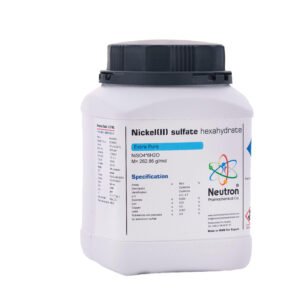Ammonium dichromate
| Formula | Cr2H8N2O7 |
| Chemical formula | (NH4)2Cr2O7 |
| Density | 2.15 g/cm3 (20°C) |
| Molar mass | 252.07 g/mol |
| Bulk density | ~ 900 kg/m3 |
| CAS number | 7757-83-7 |
| HS Code | 28415000 |
| EC number | 231-143-1 |
| Storage | Without limitation |
| SDS | available |
| R phrase | R 45-46-60-61-2-8-E21 |
| S phrase | S 53-45-60-61 |
| Odour | odourless |
| Form | solid |
| Color | orange |
| Ignition temperature | 218 °C |
| p H | 3.45(100g/l ) |
| Solubility in water | 360g/l (20°C) |
| Melting point. | 180 °C |
| Assay | ≥ | 97 | % |
| Description | Conforms | ||
| Identification | Conforms | ||
| p H | 3.0 – 4.0 | ||
| Chloride | ≤ | 0.01 | % |
| Sulphate | ≤ | 0.02 | % |
| Calcium | ≤ | 0.01 | % |
| Sodium | ≤ | 0.01 | % |
| Loss on drying | ≤ | 3 | % |
Ammonium dichromate is an orange-red crystalline inorganic compound commonly used as a chemical reagent and in educational demonstrations due to its dramatic decomposition reaction. It is well known for its oxidizing properties and distinctive “volcano” effect when ignited.
🏭⚗️ Production
Ammonium dichromate is typically produced by the reaction of ammonium sulfate with sodium dichromate in aqueous solution, followed by filtration and crystallization. The resulting crystals are dried and used for various industrial and laboratory purposes.
🔬 Properties
Ammonium dichromate has the chemical formula (NH₄)₂Cr₂O₇ and a molar mass of approximately 252.07 g/mol. It appears as bright orange-red crystals that are moderately soluble in water. Upon heating, it undergoes a highly exothermic decomposition to produce nitrogen gas, water vapor, and chromium(III) oxide, which gives rise to the characteristic “volcano” eruption effect. It is a strong oxidizer and toxic due to its chromium(VI) content.
🧪 Applications
Ammonium dichromate is used as an oxidizing agent in pyrotechnics, photography, and in the preparation of chromium compounds. It is famously used in classroom demonstrations to illustrate exothermic decomposition reactions. Industrially, it can be used in leather tanning and as a corrosion inhibitor.
⚠️ Safety
Ammonium dichromate is highly toxic and carcinogenic due to its hexavalent chromium content. It poses serious health hazards if inhaled, ingested, or in contact with skin. Exposure can cause respiratory irritation, skin sensitization, and long-term effects such as lung cancer. It should be handled with proper personal protective equipment, including gloves and respirators, and stored in a cool, dry place away from combustible materials and reducing agents.





